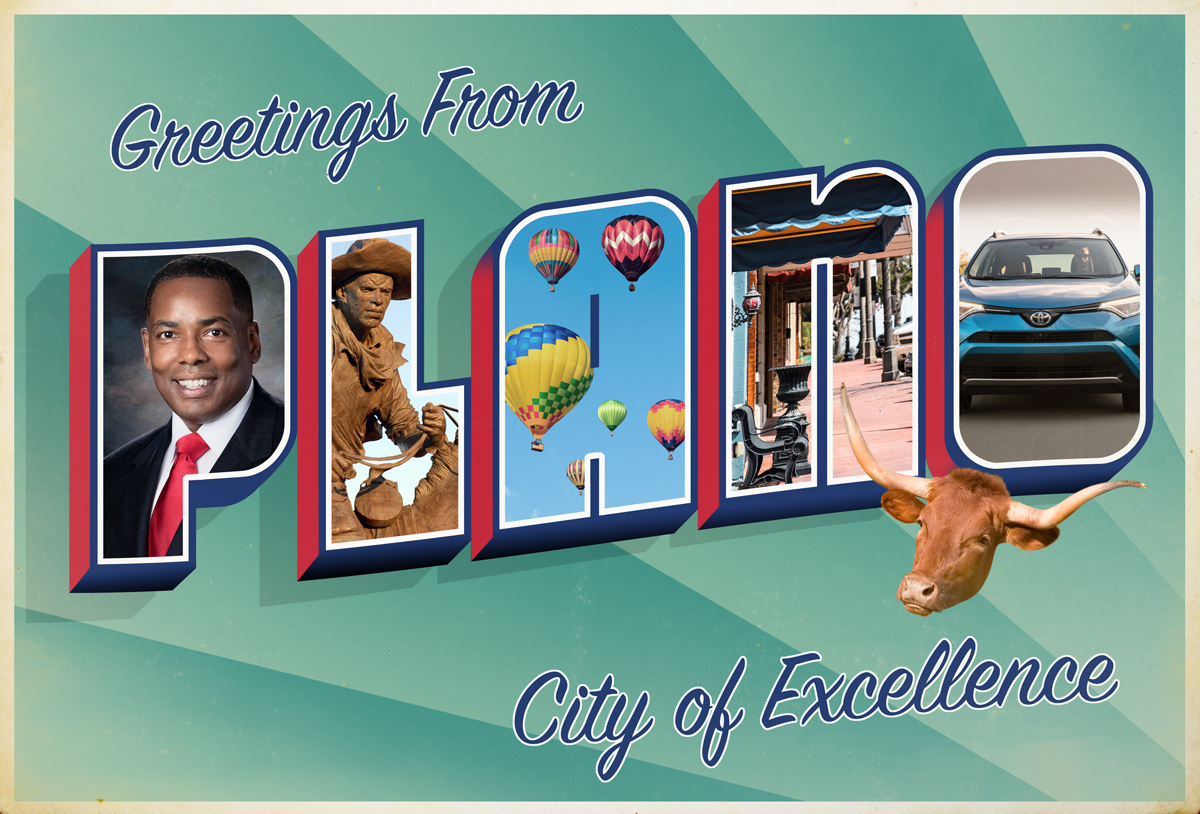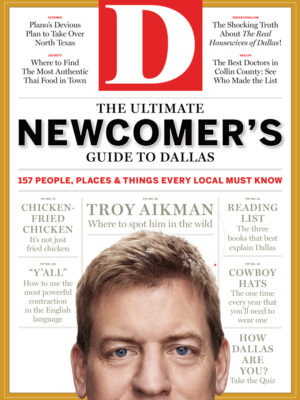In early February, in his annual state of the city speech, Plano’s outstanding mayor, Harry LaRosiliere, told a packed house at a Cinemark movie theater that Plano was nobody’s suburb—the same refrain Arlington’s Mayor Richard Greene used to bark 20 years ago. LaRosiliere’s proclamation was, of course, more eloquent than Greene’s. “In the ’80s we were a bedroom community,” he said, “and in the ’90s we were known as a big suburb. Today we are our own city, and we compete on a global stage for businesses and individuals or families looking for a home.”
This seemed pretty funny at first. It’s funny when the enormous car park known as Arlington or the festering Tea Party boil that is Mayor Beth Van Duyne’s Irving try to put on their big-boy pants and proclaim themselves successful enough to thrive without Dallas or Fort Worth. So when people chuckled at LaRosiliere’s statement, it was understandable. The headline on Jacquielynn Floyd’s column in the Dallas Morning News: “Sorry, Plano—You’re Still a Suburb.” “You may be big and diverse and have a spiffy, walkable little mixed-use development built around the DART station,” she wrote. “You may have restaurants with valet parking and celebrity chefs, a museum board, a symphony orchestra. But you’ll always be a little brother. If that makes you a suburb, you’re stuck with it. That might not be fair, but that’s life in the big city.”
“It’s now the center of its region. It’s graduated from being a suburb to being a mature city in that it’s no long-er dependent on what’s around it.”
“Look, it’s not the bedroom community it used to be,” says Paris Rutherford, an urban planner and developer who helped Plano create the mixed-use projects central to its revitalization. “People commute to Plano. It has walkable, diverse, high-quality entertainment centers. Smart new growth. Plano now sees itself like a northern Park Cities, at least in structure. It’s now in the center of its region. It’s graduated from being a suburb to being a mature city in that it’s no longer dependent on what’s around it.”
Plano has the largest population of any Dallas ring suburb—sorry, city. In North Texas, only Dallas, Fort Worth, and Arlington are larger. But the amazing thing is not just that Plano has grown, but that it has overcome the typical ring-suburb blight problem, where everyone flocks to a shiny new place, and then, 20 years later, after the shine has worn off, everyone moves on (see Mesquite, Farmers Branch, et al.). How did Plano do it?
For one thing, Plano, unlike Dallas, has had one person in charge of urban planning for about three decades, deputy city manager Frank Turner. He has provided the city a continuity of vision. When Turner signed on as the city’s chief planner, in 1984, Plano was a typical booming ring suburb, a bedroom community known for good schools and quiet neighborhoods. Thanks to a comprehensive plan created by a retired city of Dallas planner, as well as fortuitous highway development, Plano had exploded from 3,600-plus residents in 1960 to about 100,000 by the time Turner got to town. Urban planning then was largely about making sure the infrastructure kept up with growth. Plano’s success was a result of its location, not any brilliance from city leaders. “It was a little bit like that old Molly Ivins saying about being born on third base and thinking you hit a triple,” Turner says.
In the 1990s, Plano was stuffed with transplants, mostly white (more than 90 percent), and, despite Frito-Lay, overly dependent on Dallas for jobs. An easy target for big-city mockery. But then the region sprawled right past Plano, into Frisco and McKinney. The shine began to wear off.
So Turner (who retired at the end of February) worked with outside planners and embraced new concepts about what makes cities work, not just in boom times but in the long term. They asked themselves, What would differentiate the city from newer growth up north, and how do we sustain ourselves as the city ages? The foresight Plano had can be seen in three areas: Legacy to the west, downtown Plano to the east, and everywhere in between.
“What we ended up with is a model for what mixed-use should be, because in downtown you can do all this stuff within a quarter-mile.”
Then there was the development of the high-profile live-work-play centers that define Plano’s urban character today. The largest, of course, is collectively called Legacy—a 2,600-acre business park with Legacy Town Center’s shops and townhomes and apartments at its center, and, across the Tollway, the under-construction Legacy West, where Toyota will have its headquarters and even more housing and shops will spring up. It’s more than a “development.” A huge chunk of northwest Plano has essentially become an urban center.
The other live-work-play center is historic downtown Plano, which may be the city’s best evidence that it’s nobody’s suburb. “Twenty years ago, downtown Plano was in severe decline,” says Turner, whose office window overlooks the area. “A high degree of absentee ownership, very few real businesses. They had hobby businesses. There was a ring surrounding downtown of blighted structures, and there was a serious question as to how things were going to transform.”
A DART rail station opened in 2002 and served as a catalyst. It gave people a new vision for how downtown could become a “transit-oriented development,” developer-speak for “vibrant urban village.” Mixed-use projects (apartments built atop shops) were key, but to get the district hopping, changes had to be made on many fronts: zoning, parking (less, not more of it), and traffic (“calming” the streets, as was done in Dallas on Lower Greenville).
“What we ended up with is a model for what mixed-use should be,” Turner says, “because in downtown you can do all this stuff within a quarter-mile. You can go get vegetables. You can buy meat. You can go to an elementary school. You can go to a library. You can get municipal services. You can go out to eat. You can go to church. You can go to the theater. You can go to a park. And, if you have too much to drink downtown, that’s okay, because we have a jail for you right here.”
The mix of amenities, the jail aside, drew Billy Clay Myers to downtown Plano last September. Myers, a 33-year-old developer at Tenet Healthcare, takes DART to downtown Dallas every workday. (He drove to work once. “I thought I was going to go crazy,” he says.) “Plano certainly feels like a big city to me,” he says. Although, to be fair, he did move there from tiny Victoria, Texas. “DART allows for a huge savings as far as gas and wear and tear. I can walk into downtown to restaurants or the barber. It is just an awesome place.”
Now, you’re saying, Sure, but big cities are places where people go to work each day, not leave for work. True. And more people now commute to Plano for work than commute out. In fact, I am one of them, another worker who makes his way each morning to the big city. Dallas laughs at its own peril.






